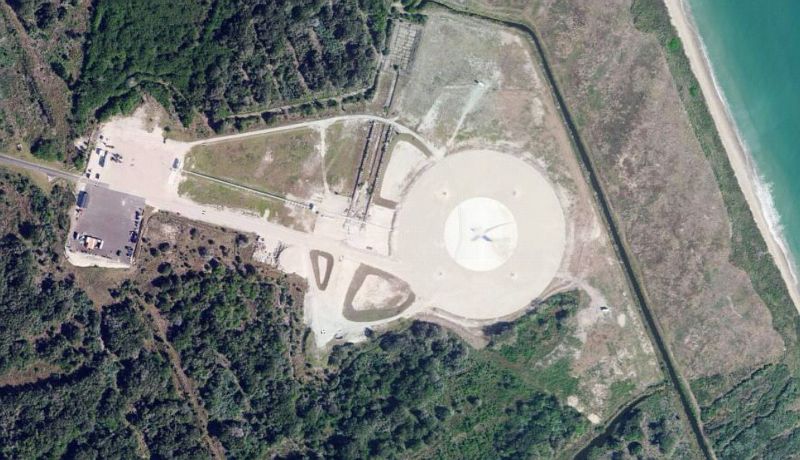
As part of the process to gain federal approval for the simultaneous landing of its Falcon Heavy rocket boosters in Florida, SpaceX has prepared an environmental assessment of the construction of two additional landing pads alongside its existing site. The report considers noise and other effects from landing up to three first stages at the same time. After undergoing a preliminary review by the US Air Force, the document has been released for public comment.
First reported by NASASpaceFlight.com, the document offers some interesting details about the proposed launch and landing of SpaceX's heavy lift rocket, which the company hopes to fly for the first time in the spring or early summer of 2017. After previously demonstrating the ability to land a single Falcon 9 booster, SpaceX also hopes to land the three first-stage boosters that will power the Falcon Heavy for potential re-use.
The company states this reusability as its rationale for the new construction—reducing the cost of access to space. "This purpose continues to support SpaceX’s overall missions for NASA and the USAF," the document states. "The action continues to fulfill the U.S. expectation that space transportation costs are reduced in order to make continued exploration, development, and use of space more affordable."
As part of the document, SpaceX also says it would like to build a Dragon capsule processing facility on the landing zone to support refurbishment of the Dragon 2 spacecraft, designed to carry crew into orbit. The 130-foot-long facility would provide a "temporary" facility for vehicle propellant load and propulsion system servicing.
When it originally designed its Landing Zone 1 facility at Cape Canaveral Air Force Station, for the single Falcon 9 first stage booster, the company envisioned the need for one main pad approximately 200 feet across, and four smaller contingency pads, each approximately 150 feet in diameter. The chosen site had enough acreage to accommodate all five pads.
Improvements in the rocket's landing navigation guidance system obviated the need for the contingency pads with the Falcon 9, however. So now the company wants to use the additional space to construct two concrete landing pads, each with an approximate diameter of 282 feet surrounded by an approximate 50-foot-wide hard-packed soil “apron." This would give SpaceX three landing pads and the ability to bring back all three Falcon Heavy boosters to land while also retaining the option to land one or two on drone ships in the Atlantic Ocean.
In addition to the potential for a dozen Falcon 9 launches and landings each year, the document says SpaceX may eventually make six Falcon Heavy launches a year, potentially returning an additional 18 boosters to the Florida-based site. The new pads and crane sites would be configured to allow parallel processing of landed boosters. With US Air Force Approval, construction could begin as early as this spring.
If approval for the expansion of the landing zone is not granted after public comments, SpaceX indicated that it would still launch the Falcon 9 and Falcon Heavy rockets from Florida, but only a single booster would return to Landing Zone 1. "The remaining Falcon Heavy boosters would either fall into the Atlantic Ocean downrange or land on the droneship," the document says. "SpaceX’s ability to fully meet the National Space Transportation Policy goals of providing low-cost reliable access to and from space would be negatively affected. Therefore, this alternative is not preferred."
reader comments
71